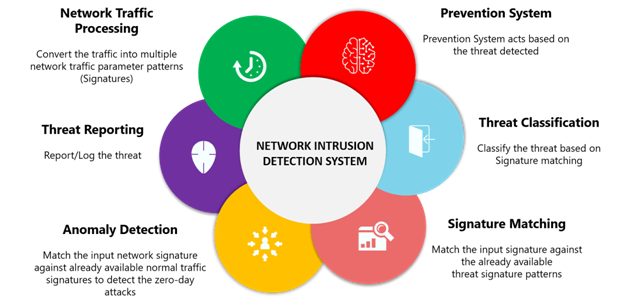Online banking has made managing our money more convenient than ever before. However, it has also given rise to a sneaky underworld of cybercriminals who are after your hard-earned cash. Both individuals and businesses have a role to play in protecting themselves from these online banking fraudsters.
Over £1.2 billion was stolen by criminals through authorized and unauthorized fraud in 2022, equivalent to over £2,300 every minute. Fraud detection tools can be utilized to stay safe from online banking fraud.
In this article, we dive into the common types of online banking security breaches, the role of detection software, and the key trends in online banking fraud.
 Source: The European business review
Source: The European business review
Various forms of online banking security breaches
Numerous prevalent forms of online banking security breaches include phishing attempts, unauthorized account access (account takeover), identity theft, malware and ransomware, and Card-Not-Present (CNP) fraud.
Phishing Attacks entail deceptive emails or text messages that mimic official communications from your bank, urging you to click a link and log in to your account. It is essential to exercise caution as these seemingly innocuous messages often conceal traps set by malicious actors with the intent to steal your login credentials.
Account Takeover (ATO) transpires when an unauthorized individual gains control of your bank account without your consent. Cybercriminals frequently employ stolen login credentials to impersonate you and gain unauthorized access to your account.
Identity Theft occurs when criminals steal your personal information. Once in possession of this data, they can open new accounts, apply for loans, and engage in various fraudulent activities in your name. Meanwhile, malware and ransomware behave like computer viruses, but their primary aim is financial gain. Malware can surreptitiously infiltrate your device and record your keystrokes, while ransomware can restrict your access to your computer until you pay a ransom.
Conversely, Card-Not-Present (CNP) Fraud involves the illicit use of your card information without the physical presence of the actual card, typically during online shopping transactions.
It is imperative to exercise prudence when interacting with links or sharing personal information online. Employ robust and distinct passwords for your accounts, and vigilantly monitor your bank statements for any anomalous activity. If you harbor any suspicion of fraudulent activity, promptly report it to your bank. By staying informed and practicing online vigilance, you can fortify your defenses against these digital threats and safeguard your financial well-being.
The Role of Detection Software
Fraud detection tools in banking are your financial safety net as they can save you from falling for the tactics of cybercriminals. These tools are like a digital watchdog for your bank accounts. It’s a set of computer programs designed to spot suspicious activities and potential threats in real-time.
It sifts through massive amounts of data, looking for patterns, anomalies, or behaviors that don’t quite add up. It then raises a virtual alarm when it detects something fishy, alerting security teams or automatically taking action to protect your accounts.
Here are some key features of effective detection software
Detection software conducts real-time monitoring of your transactions as they happen. If it notices any unusual or unauthorized activity, it can instantly flag it for further investigation.
The software learns your typical behavior – like your spending patterns, locations, and times of day you usually make transactions. If there’s a deviation from your norm, it can raise a red flag.
Also, detection software uses machine learning algorithms to adapt and improve its accuracy over time. It can even pick up on new fraud tactics as they emerge.
Here are the key benefits of using detection software
Detection software is like having a security guard who never sleeps. It catches fraud attempts in their early stages, often before you even notice anything is wrong. Unlike human security teams, detection software doesn’t suffer from alert fatigue. It’s excellent at distinguishing between actual threats and innocent transactions, reducing false alarms.
When you know your bank has robust detection software in place, you can trust that your money is in safe hands. This trust is essential for a healthy banking relationship.
Detection software tirelessly watches over your accounts, identifying potential threats and ensuring your financial safety. So, the next time you log into your online banking, know that you have a trusty digital guardian working diligently behind the scenes to protect your hard-earned money.
 Source: Quora
Source: Quora
Trends in Online Banking Security
Let’s delve into the most recent developments in online banking security, illuminating the strategies employed by malicious actors to access your hard-earned funds. Prominent trends in this domain encompass social manipulation methods, the deployment of sophisticated software threats, vulnerabilities within mobile banking, and the utilization of cutting-edge technologies by fraudsters.
Social Manipulation Methods
Within this realm, several deceptive methods come to the fore, including spear-phishing, vishing, and smishing.
Spear-phishing materializes when an email arrives, seemingly from a trusted source like your supervisor or a close acquaintance. While it appears authentic, it conceals a snare. Spear-phishing represents a targeted manifestation of email deceit, where cybercriminals meticulously customize their messages to deceive you into divulging sensitive information or engaging with malicious hyperlinks.
Vishing involves the receipt of a deceptive phone call, purportedly from your “bank,” soliciting your account particulars. It exudes an air of legitimacy but, in reality, emanates from fraudsters. Vishing hinges on scammers employing voice calls to impersonate financial institutions or other credible entities, coaxing you into sharing personal data via telephone.
Smishing transpires when a text message arrives, bearing the semblance of communication from your bank, urging you to interact with a link or furnish sensitive data. Smishing represents the nefarious cousin of phishing, deploying SMS or text messages to ensnare you into revealing valuable information.
Advanced Software Threats
Banking Trojans insinuate hidden Trojan horses into your computer, surreptitiously recording your keystrokes during online banking sessions. These malevolent entities steal your login credentials and clandestinely funnel your funds into the clutches of cybercriminals. Moreover, malefactors now target financial institutions with ransomware, encrypting critical data and extorting a ransom while threatening to expose sensitive information if their demands remain unmet.
Mobile Banking Vulnerabilities
The widespread usage of mobile banking apps, while convenient, has piqued the interest of malevolent actors. With an increasing number of individuals relying on mobile banking, there exists a greater opportunity for cybercriminals to strike.
Risks inherent in mobile banking encompass the use of public Wi-Fi, downloading apps from unverified sources, and the possibility of losing your mobile device. These vulnerabilities serve as conduits for cybercriminals lurking within the digital shadows.
Leveraging Emerging Technologies
Fraudsters leverage cutting-edge technologies to enhance the sophistication of their operations. Among the technologies exploited are deepfake technology, artificial intelligence (AI), and the Internet of Things (IoT).
Deepfake technology employs AI to fabricate convincing counterfeit videos or audio recordings. Cybercriminals can harness deepfake technology to impersonate bank personnel, coaxing you into actions that compromise your security. Furthermore, AI enables malefactors to scrutinize patterns, circumvent security protocols, and execute attacks with greater efficiency.
The IoT connects our devices in unprecedented ways, but it also unlocks new avenues for fraudsters. Weak security measures within smart devices can be exploited to gain access to your banking information.
In a milieu marked by perpetual technological evolution, ensuring online safety becomes a collective responsibility. Exercise caution when faced with unsolicited emails, calls, or text messages, always validating the legitimacy of any communication from your bank. Maintain the currency of your devices and applications by applying the latest security patches, and employ robust, unique passwords. By remaining vigilant and well-informed, you can fortify yourself against the ever-mutating threats of online banking security breaches.
 Source: Hughes systique
Source: Hughes systique
Why you shouldn’t be scared of online banking fraud
Online banking has revolutionized the way we manage our finances, but it has also given rise to new challenges in the form of cyber threats. The good news is that you can avoid online banking fraud by staying alert and utilizing fraud detection software.
It is not a pleasant experience to fall victim to online banking fraud. It can be emotionally draining and frustrating. When you or your bank utilizes fraud detection software, you have a digital hero working tirelessly behind the scenes to protect your hard-earned money from getting into the hands of cybercriminals.
We have looked into the world of detection software, exploring what it is, how it works, and why it’s your financial safety net. We have also looked into the various types of online banking security breaches, the key trends in online banking fraud, and the role of detection software.
Author’s Bio: Mercy Adewumi
 Mercy is a professional B2B and SaaS writer who specializes in crafting advanced-level content that is engaging, fun, and appeals to top-level executives. She is a resilient, self-motivated, and result-driven person with the proven ability to create high-quality content related to Business, Saas Tech, and the Financial Markets. She believes that SEO is the best digital marketing medium ideal for long-term growth. When she is not writing, she is creating strategies for business growth.
Mercy is a professional B2B and SaaS writer who specializes in crafting advanced-level content that is engaging, fun, and appeals to top-level executives. She is a resilient, self-motivated, and result-driven person with the proven ability to create high-quality content related to Business, Saas Tech, and the Financial Markets. She believes that SEO is the best digital marketing medium ideal for long-term growth. When she is not writing, she is creating strategies for business growth.
